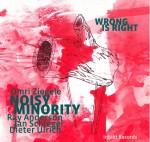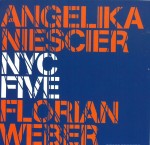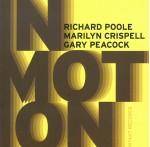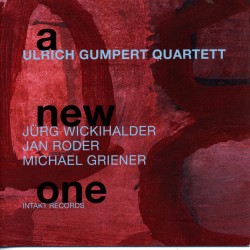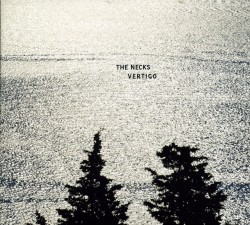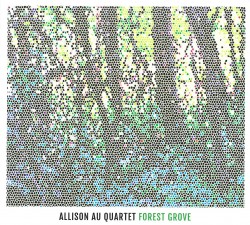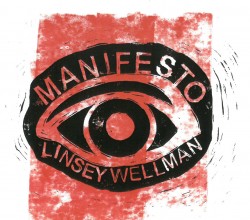Preserving Rediscovered Free Music Classics
Fully grasping the intricacies of musical history often depends on the availability of recorded documents. That’s why many musical histories are re-evaluated once hitherto little known performances become accessible. This is especially crucial when it comes to completely or mostly improvised sounds. Reissued and/or rediscovered sessions, which preserve ephemeral moments, confirm the music’s wide dissemination. More importantly they add the equivalent of additional sentences that provide a fuller understanding of the free music story.
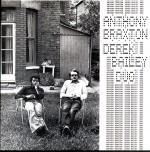 Consisting of almost 78 minutes of music, First Duo Concert (Emanem 5038 emanemdisc.com) is particularly relevant because it captures one dozen interactions between American multi-reedist Anthony Braxton and British guitarist Derek Bailey. Recorded in 1974, it displays the similarities, and as significantly, the differences between free music concepts. Even at this early date Bailey and many of his London-based colleagues rejected the idea of playing anything but in-the-moment music. But as true to the Association for the Advancement of Creative Musicians (AACM) ethos as Knights Templar would be to their creed during the Crusades, the saxophonist/clarinetist brought not only familiarity with the blues form, but also an interest in semi-composed material and extended explorations in certain techniques to the date – concerns that remain with him more than 40 years later. When the completely improvised Area 3 (open) is reached, congruence turns to cooperation. What originally could have been the jolts produced when two blindfolded players collided with one another turns into a motley garment whose patchwork can envelop grinding string buzzes and harsh clangs as well as resonating timber wolf-like saxophone snarls and moderated bass clarinet ostinato. If gating banjo-like reverb plus internal body tube puffs and renal-like vibrations from his reed collection on Braxton’s part still disturb the evolving continuum like pointed flecks in rough wood grain, then his unexpected peeps and pops lessen as both aim towards measured expression. Allowing each partner’s full expression during single unaccompanied tracks, the duo reaches the zenith of mutual understanding on the extended Area 11 (open). While each still tests the limits of the other’s convictions with the zeal of a small child taunting the family pet, harsh, oblique strums and quivering, aviary-styled peeps from the clarinet finally dovetail enough so that aggressive string thumb taps fit into an accompanying groove, as later circular tweets from sopranino saxophone, clarinet and flute settle uneasily next to guitar strokes. The concluding Area 12 with its corkscrew reed squeaks and rugged string quivers gives notice that neither improvisational philosophy has bested the other. But the framework for future reciprocal idea exchanges has been set.
Consisting of almost 78 minutes of music, First Duo Concert (Emanem 5038 emanemdisc.com) is particularly relevant because it captures one dozen interactions between American multi-reedist Anthony Braxton and British guitarist Derek Bailey. Recorded in 1974, it displays the similarities, and as significantly, the differences between free music concepts. Even at this early date Bailey and many of his London-based colleagues rejected the idea of playing anything but in-the-moment music. But as true to the Association for the Advancement of Creative Musicians (AACM) ethos as Knights Templar would be to their creed during the Crusades, the saxophonist/clarinetist brought not only familiarity with the blues form, but also an interest in semi-composed material and extended explorations in certain techniques to the date – concerns that remain with him more than 40 years later. When the completely improvised Area 3 (open) is reached, congruence turns to cooperation. What originally could have been the jolts produced when two blindfolded players collided with one another turns into a motley garment whose patchwork can envelop grinding string buzzes and harsh clangs as well as resonating timber wolf-like saxophone snarls and moderated bass clarinet ostinato. If gating banjo-like reverb plus internal body tube puffs and renal-like vibrations from his reed collection on Braxton’s part still disturb the evolving continuum like pointed flecks in rough wood grain, then his unexpected peeps and pops lessen as both aim towards measured expression. Allowing each partner’s full expression during single unaccompanied tracks, the duo reaches the zenith of mutual understanding on the extended Area 11 (open). While each still tests the limits of the other’s convictions with the zeal of a small child taunting the family pet, harsh, oblique strums and quivering, aviary-styled peeps from the clarinet finally dovetail enough so that aggressive string thumb taps fit into an accompanying groove, as later circular tweets from sopranino saxophone, clarinet and flute settle uneasily next to guitar strokes. The concluding Area 12 with its corkscrew reed squeaks and rugged string quivers gives notice that neither improvisational philosophy has bested the other. But the framework for future reciprocal idea exchanges has been set.
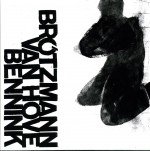 Three years earlier the protean trio of German saxophonist Peter Brötzmann, Belgian pianist Fred Van Hove and Dutch percussionist Han Bennink was constantly touring the continent confirming that a bellicose interpretation of free jazz wasn’t confined to Americans. The CD 1971 (Corbett vs Dempsey CD 020 corbettvsdempsey.com) reissues the band’s justly famous, furiously unyielding set at that year’s New Jazz Meeting, but adds an additional almost 16 minutes of sound recorded four months earlier that demonstrate the hair-trigger-like technical skill that goes into what initially seems like relentless bombast. Like the proverbial tough guy with the gentle interior, Van Hove for one uncovers elegant near-romantic phrasing on Filet Americain, which he expands with harsh clanging, sounding as if he prepared the piano with thumbtacks. Bennink confines himself to clattering reverberations and Brötzmann blows with a burr-like tone. I.C.P. No.17 is more aggressive, with the saxophonist’s subterrestrial exposition echoed by Bennink probably honking through a Tibetan radung or long metal bass horn. Just For Altena the 26-minute final showcase then shows how a palpitating rhythm can be maintained even as the players push techniques past expected instrumental limits. Spelled by the percussionist’s smashing cracks, horn blowing and yells, Brötzmann’s virtually endless honks and glottal punctuation sound as if he’s soon going to be pushing blood out of his horn as well as air. Still he manages to work in quotes from Bavarian marches, polkas, Mexican hat dances and limitless free-jazz glossolalia as he plays, often unaccompanied, reaching beyond the highest imaginable altissimo slur. Like a hyperactive canine, Bennink is also in motion, shoving everything from a conga-drum interlude to bass drum resonation to gong and cymbal clashes into his accompaniment as if boiling a potluck stew. Van Hove marathon-runner-like glissandi share space with crackling kinetic expositions that whack the keys and strings as frequently as they play them. Is it any wonder that at this time this trio could challenge any electrified rock band for pure excitement?
Three years earlier the protean trio of German saxophonist Peter Brötzmann, Belgian pianist Fred Van Hove and Dutch percussionist Han Bennink was constantly touring the continent confirming that a bellicose interpretation of free jazz wasn’t confined to Americans. The CD 1971 (Corbett vs Dempsey CD 020 corbettvsdempsey.com) reissues the band’s justly famous, furiously unyielding set at that year’s New Jazz Meeting, but adds an additional almost 16 minutes of sound recorded four months earlier that demonstrate the hair-trigger-like technical skill that goes into what initially seems like relentless bombast. Like the proverbial tough guy with the gentle interior, Van Hove for one uncovers elegant near-romantic phrasing on Filet Americain, which he expands with harsh clanging, sounding as if he prepared the piano with thumbtacks. Bennink confines himself to clattering reverberations and Brötzmann blows with a burr-like tone. I.C.P. No.17 is more aggressive, with the saxophonist’s subterrestrial exposition echoed by Bennink probably honking through a Tibetan radung or long metal bass horn. Just For Altena the 26-minute final showcase then shows how a palpitating rhythm can be maintained even as the players push techniques past expected instrumental limits. Spelled by the percussionist’s smashing cracks, horn blowing and yells, Brötzmann’s virtually endless honks and glottal punctuation sound as if he’s soon going to be pushing blood out of his horn as well as air. Still he manages to work in quotes from Bavarian marches, polkas, Mexican hat dances and limitless free-jazz glossolalia as he plays, often unaccompanied, reaching beyond the highest imaginable altissimo slur. Like a hyperactive canine, Bennink is also in motion, shoving everything from a conga-drum interlude to bass drum resonation to gong and cymbal clashes into his accompaniment as if boiling a potluck stew. Van Hove marathon-runner-like glissandi share space with crackling kinetic expositions that whack the keys and strings as frequently as they play them. Is it any wonder that at this time this trio could challenge any electrified rock band for pure excitement?
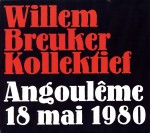 Another band that could do the same was the Willem Breuker Kollektief (WBK), like Bennink, part of Amsterdam’s fertile improv scene. Mixing anarchistic stunts, parody, constant motion, classic tune recreations plus free-form playing with top-line musicianship, the nine-piece group led by saxophonist/clarinetist Breucker (1944-2010) was the epitome of post-modernism. Yet unlike more academically oriented Fluxus or Dada experimentalists, the WBK was so entertaining that this two-CD set recorded live in France, Angoulême 18 mai 1980 (Fou Records FR-CD 9&10 fou.records.free.fr), ends with the raucous audience demanding three successive encores. A European equivalent of Sun Ra’s Arkestra, but infinitely less serious-minded, here the group mixes the precision of Glenn Miller’s band, the romping swing of Count Basie’s and the humour of Laurel and Hardy. During the concert modern jazz originals, a tango, Kurt Weil’s Song of Mandalay, Les Brown and his band of Renown’s theme song Sentimental Journey and finally the hokey I Believe – to disperse the crowd – race by at record pace. Additionally, following Big Busy Band where the group’s solid brassy power is broken up by Rob Verdurmen’s flashy drumming à la Gene Krupa, plus bassist Arjen Gorter playing Blues in the Closet, Breucker exposes his inner Benny Goodman and tenor saxophonist Maaren van Norden outscreams Big Jay McNeeley. Eventually an episode of pseudo-show-biz banter introduces March & Sax Solo with Vacuum Cleaner where Breucker does just that, improvising in tandem and in opposition to the whining household appliance. Like a squad of quick change artists the WBK is capable of taking on any persona, with pianist Henk de Jonge for instance, comping like a bopper, knocking out stride piano asides, beginning and ending Flat Jungle with romantic flourishes and extravagant glissandi that could be Vladimir Ashkenazy playing Chopin, channels Cecil Taylor’s contrasting dynamics in the song’s centre and mocks the saxophonist’s appropriation of the highest altissimo notes in existence with studied, flamboyant quotes from Rhapsody in Blue. Gorter’s bass line and Verdurmen’s back beat ensure that foot-stomping elation is always present, even if the rhythm team may sometimes feel like extras in a Marx Brothers movie with all the musical mayhem going on around them. Still any band that on Potsdamer Stomp mocks rock music’s overwrought yakety saxes via dueling solos from Breuker and baritone Bob Drissen, at the same time as playing Name That Tune, as fragments of everything from Chick Corea’s Spain to the Marine Hymn to circus music loom into earshot, confirms that these discs do a lot more than fill in a three-year gap in the WBK discography. They’re a jubilant listening experience on their own.
Another band that could do the same was the Willem Breuker Kollektief (WBK), like Bennink, part of Amsterdam’s fertile improv scene. Mixing anarchistic stunts, parody, constant motion, classic tune recreations plus free-form playing with top-line musicianship, the nine-piece group led by saxophonist/clarinetist Breucker (1944-2010) was the epitome of post-modernism. Yet unlike more academically oriented Fluxus or Dada experimentalists, the WBK was so entertaining that this two-CD set recorded live in France, Angoulême 18 mai 1980 (Fou Records FR-CD 9&10 fou.records.free.fr), ends with the raucous audience demanding three successive encores. A European equivalent of Sun Ra’s Arkestra, but infinitely less serious-minded, here the group mixes the precision of Glenn Miller’s band, the romping swing of Count Basie’s and the humour of Laurel and Hardy. During the concert modern jazz originals, a tango, Kurt Weil’s Song of Mandalay, Les Brown and his band of Renown’s theme song Sentimental Journey and finally the hokey I Believe – to disperse the crowd – race by at record pace. Additionally, following Big Busy Band where the group’s solid brassy power is broken up by Rob Verdurmen’s flashy drumming à la Gene Krupa, plus bassist Arjen Gorter playing Blues in the Closet, Breucker exposes his inner Benny Goodman and tenor saxophonist Maaren van Norden outscreams Big Jay McNeeley. Eventually an episode of pseudo-show-biz banter introduces March & Sax Solo with Vacuum Cleaner where Breucker does just that, improvising in tandem and in opposition to the whining household appliance. Like a squad of quick change artists the WBK is capable of taking on any persona, with pianist Henk de Jonge for instance, comping like a bopper, knocking out stride piano asides, beginning and ending Flat Jungle with romantic flourishes and extravagant glissandi that could be Vladimir Ashkenazy playing Chopin, channels Cecil Taylor’s contrasting dynamics in the song’s centre and mocks the saxophonist’s appropriation of the highest altissimo notes in existence with studied, flamboyant quotes from Rhapsody in Blue. Gorter’s bass line and Verdurmen’s back beat ensure that foot-stomping elation is always present, even if the rhythm team may sometimes feel like extras in a Marx Brothers movie with all the musical mayhem going on around them. Still any band that on Potsdamer Stomp mocks rock music’s overwrought yakety saxes via dueling solos from Breuker and baritone Bob Drissen, at the same time as playing Name That Tune, as fragments of everything from Chick Corea’s Spain to the Marine Hymn to circus music loom into earshot, confirms that these discs do a lot more than fill in a three-year gap in the WBK discography. They’re a jubilant listening experience on their own.
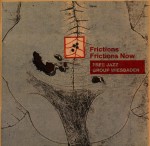 If music’s value is judged by its pervasive acceptance, then the tracks on Frictions/Frictions Now (NoBusiness Records NBCD 79 nobusinessrecords.com) are as notable as the better-known efforts by Breuker, Braxton-Bailey and Brötzmann. Independent of other connections, members of the Free Jazz Group Wiesbaden (FJGW) developed a caustic and punchy free music variant, which mixed musique concrète and chance notions from notated music, folkloric instruments and tropes plus improvisation that went beyond freebop into sonic intoxication. Recorded in 1969 and 1971 and released in limited edition, the German band members eventually pursued other paths. Like Quebec’s Walter Boudreau, who went from leading the Zappa-esque ensemble l’Infonie to become a composer and artistic director of Société de musique contemporaine du Québec, trumpeter Michael Sell abandoned improvisation for fully notated work in the 1980s; saxophonist/pianist/flutist Dieter Scherf played with major German free jazzers later in the decade before abandoning music because of dental problems; drummer Wolfgang Schlick and guitarist Gerhard König’s histories are even more obscure. However the three tracks here demonstrate the band’s originality. Coming across like a spiky combination of Jimi Hendrix, Sonny Sharrock and Earl Scruggs, König’s chord-shredding flanges insinuate into whatever spaces the horns leave open with a style that includes surf music intonation, single-string finesse and preparations that could come from double bass. Schlick’s coiled rumbles and consistent thumps range from martial to miasmatic; he doesn’t swing but keeps the pieces moving notwithstanding, even when slamming his metal bracket for unusual rhythms. Squeezing death rattles and hunting-horn-like blares from his trumpet, Sell’s tone resembles those of ur-New Thing players like Earl Cross and Don Ayler. Yet when he unites with Schlick they harmonize enough to approach contemporary jazz, and even flutter out rounded grace notes on the final Frictions Now Part II, to reach a meandering, delicate tempo. Leaping among his instruments like an unsupervised child in a music store, Scherf brings something different to each one. On alto saxophone, obviously influenced by the atonal techniques of American free jazzers, his honks, snorts and blats include crying vibrations that add an unconventional Teutonic melancholy. Brief shenai and oboe interludes introduce World Music allusions to the middle of the extended Frictions, while his inner-piano strums join with König’s finger-style ornamentation on the same piece for stark tonal outlines, finally climaxing with a moving motif that appears to judder from cadence to cacophony and back again.
If music’s value is judged by its pervasive acceptance, then the tracks on Frictions/Frictions Now (NoBusiness Records NBCD 79 nobusinessrecords.com) are as notable as the better-known efforts by Breuker, Braxton-Bailey and Brötzmann. Independent of other connections, members of the Free Jazz Group Wiesbaden (FJGW) developed a caustic and punchy free music variant, which mixed musique concrète and chance notions from notated music, folkloric instruments and tropes plus improvisation that went beyond freebop into sonic intoxication. Recorded in 1969 and 1971 and released in limited edition, the German band members eventually pursued other paths. Like Quebec’s Walter Boudreau, who went from leading the Zappa-esque ensemble l’Infonie to become a composer and artistic director of Société de musique contemporaine du Québec, trumpeter Michael Sell abandoned improvisation for fully notated work in the 1980s; saxophonist/pianist/flutist Dieter Scherf played with major German free jazzers later in the decade before abandoning music because of dental problems; drummer Wolfgang Schlick and guitarist Gerhard König’s histories are even more obscure. However the three tracks here demonstrate the band’s originality. Coming across like a spiky combination of Jimi Hendrix, Sonny Sharrock and Earl Scruggs, König’s chord-shredding flanges insinuate into whatever spaces the horns leave open with a style that includes surf music intonation, single-string finesse and preparations that could come from double bass. Schlick’s coiled rumbles and consistent thumps range from martial to miasmatic; he doesn’t swing but keeps the pieces moving notwithstanding, even when slamming his metal bracket for unusual rhythms. Squeezing death rattles and hunting-horn-like blares from his trumpet, Sell’s tone resembles those of ur-New Thing players like Earl Cross and Don Ayler. Yet when he unites with Schlick they harmonize enough to approach contemporary jazz, and even flutter out rounded grace notes on the final Frictions Now Part II, to reach a meandering, delicate tempo. Leaping among his instruments like an unsupervised child in a music store, Scherf brings something different to each one. On alto saxophone, obviously influenced by the atonal techniques of American free jazzers, his honks, snorts and blats include crying vibrations that add an unconventional Teutonic melancholy. Brief shenai and oboe interludes introduce World Music allusions to the middle of the extended Frictions, while his inner-piano strums join with König’s finger-style ornamentation on the same piece for stark tonal outlines, finally climaxing with a moving motif that appears to judder from cadence to cacophony and back again.
Like crate digging in a second-hand vinyl store, reissues like these can reveal unexpected values. They confirm the talents of the known or introduce unfamiliar stylists who should have been better known first time out.
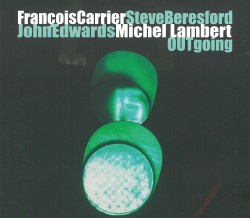 OUTgoing
OUTgoing

